-
 Bitcoin
Bitcoin $106,754.6083
1.33% -
 Ethereum
Ethereum $2,625.8249
3.80% -
 Tether USDt
Tether USDt $1.0001
-0.03% -
 XRP
XRP $2.1891
1.67% -
 BNB
BNB $654.5220
0.66% -
 Solana
Solana $156.9428
7.28% -
 USDC
USDC $0.9998
0.00% -
 Dogecoin
Dogecoin $0.1780
1.14% -
 TRON
TRON $0.2706
-0.16% -
 Cardano
Cardano $0.6470
2.77% -
 Hyperliquid
Hyperliquid $44.6467
10.24% -
 Sui
Sui $3.1128
3.86% -
 Bitcoin Cash
Bitcoin Cash $455.7646
3.00% -
 Chainlink
Chainlink $13.6858
4.08% -
 UNUS SED LEO
UNUS SED LEO $9.2682
0.21% -
 Avalanche
Avalanche $19.7433
3.79% -
 Stellar
Stellar $0.2616
1.64% -
 Toncoin
Toncoin $3.0222
2.19% -
 Shiba Inu
Shiba Inu $0.0...01220
1.49% -
 Hedera
Hedera $0.1580
2.75% -
 Litecoin
Litecoin $87.4964
2.29% -
 Polkadot
Polkadot $3.8958
3.05% -
 Ethena USDe
Ethena USDe $1.0000
-0.04% -
 Monero
Monero $317.2263
0.26% -
 Bitget Token
Bitget Token $4.5985
1.68% -
 Dai
Dai $0.9999
0.00% -
 Pepe
Pepe $0.0...01140
2.44% -
 Uniswap
Uniswap $7.6065
5.29% -
 Pi
Pi $0.6042
-2.00% -
 Aave
Aave $289.6343
6.02%
Is it more reliable if OBV diverges from price twice? How to quantify?
OBV divergence, where volume trends oppose price, can signal potential reversals in crypto markets, especially when confirmed twice.
Jun 16, 2025 at 09:44 am
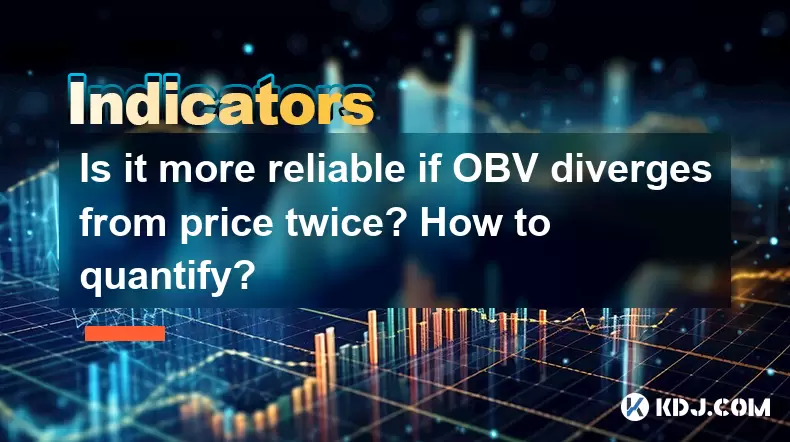
Understanding the Basics of On-Balance Volume (OBV)
On-Balance Volume (OBV) is a technical analysis indicator that uses volume flow to predict changes in stock or cryptocurrency prices. The principle behind OBV is that volume precedes price, meaning significant buying or selling pressure can be detected through volume trends before actual price movement occurs.
In the context of cryptocurrencies, where market sentiment and liquidity play crucial roles, OBV becomes a valuable tool for traders seeking early signals of trend reversals or continuations. When the OBV line diverges from the price chart, it may suggest that the current price trend is losing momentum.
What Does Divergence Between OBV and Price Indicate?
Divergence occurs when the OBV line moves in the opposite direction of the price. For instance:
- If the price is rising but OBV is falling, this could signal weakening buying pressure despite higher prices — often interpreted as bearish.
- Conversely, if the price is falling but OBV is rising, this may indicate accumulation — a potential bullish sign.
When such divergence happens twice, many traders believe the signal gains strength. However, reliability isn't just about frequency; it also depends on how clearly defined and measured the divergence is within a specific time frame and across different market conditions.
How to Identify Double Divergence Using OBV
To determine whether OBV has diverged from price twice, follow these steps:
- Plot both the price chart and the OBV indicator on the same time frame.
- Identify at least two swing highs or swing lows on the price chart.
- Compare these with corresponding peaks or troughs on the OBV line.
- Mark instances where OBV fails to confirm the price action — e.g., price makes a new high, but OBV does not.
- Repeat this process to find a second divergence point within a reasonable timeframe (typically within 20–40 candles).
The key here is to ensure that both divergences occur under similar market conditions — either both bullish or both bearish — and are spaced closely enough to suggest a consistent shift in volume dynamics.
Quantifying OBV Divergence: A Step-by-Step Approach
To quantify OBV divergence, especially when it occurs twice, you need a structured methodology:
- Define the Time Frame: Choose a consistent candlestick interval — such as 1-hour or 4-hour charts — to avoid misleading signals caused by varying volatility.
- Mark Key Price Swings: Use tools like Fibonacci retracement or pivot points to identify clear highs and lows.
- Compare OBV Values at These Points: At each marked price swing, note the corresponding OBV value. For example, if price reaches a new high at point A but OBV is lower than at a previous high at point B, record this as a divergence.
- Repeat for a Second Instance: Look for another price swing where the same pattern repeats — i.e., price moves in one direction while OBV moves in the opposite direction.
- Calculate the Percentage Difference: To quantify the strength of divergence, compute the percentage change between the two OBV readings relative to their average. This helps assess how pronounced the divergence is.
By quantifying divergence in this way, traders can compare multiple signals and filter out weaker ones, increasing confidence in the observed pattern.
Practical Considerations for Crypto Traders
In cryptocurrency trading, volume plays a critical role due to the high volatility and frequent manipulation seen in smaller-cap tokens. Here's what traders should keep in mind when analyzing OBV divergence:
- Market Cap and Liquidity Matter: In low-liquidity assets, volume spikes can be misleading. Focus on major cryptocurrencies like Bitcoin, Ethereum, or large altcoins for more reliable OBV signals.
- Time Frame Sensitivity: Shorter time frames may produce more false signals. Confirm divergence across multiple time frames (e.g., 1-hour and 4-hour) for better accuracy.
- Use Other Indicators for Confirmation: Combine OBV with tools like MACD, RSI, or moving averages to validate divergence. For example, a bearish RSI divergence alongside OBV divergence increases the likelihood of a reversal.
- Volume Consistency Is Key: Ensure that the volume used in calculating OBV is consistent across periods. Sudden surges unrelated to real demand can distort the indicator.
These considerations help traders avoid over-reliance on OBV alone and provide a more robust framework for interpreting double divergence signals.
Frequently Asked Questions (FAQ)
Q: Can OBV divergence occur more than twice and still be meaningful?
A: Yes, multiple divergences can occur, especially in prolonged trends. However, the significance of each subsequent divergence tends to diminish unless confirmed by other indicators or price action.
Q: Is OBV suitable for all types of cryptocurrencies?
A: While OBV can technically be applied to any asset with volume data, its effectiveness varies. It works best with high-volume, liquid assets like BTC or ETH, where volume patterns are more reflective of genuine market sentiment.
Q: How do I adjust OBV settings for different time frames?
A: OBV itself doesn’t have adjustable parameters like moving averages. However, the interpretation should vary based on the time frame. On shorter intervals, look for tighter divergences; on longer intervals, focus on broader trends.
Q: What’s the difference between regular OBV and smoothed OBV?
A: Standard OBV adds or subtracts volume cumulatively without smoothing. Smoothed OBV applies a moving average (like a 5-period EMA) to reduce noise and make divergences easier to spot, especially in volatile crypto markets.
Disclaimer:info@kdj.com
The information provided is not trading advice. kdj.com does not assume any responsibility for any investments made based on the information provided in this article. Cryptocurrencies are highly volatile and it is highly recommended that you invest with caution after thorough research!
If you believe that the content used on this website infringes your copyright, please contact us immediately (info@kdj.com) and we will delete it promptly.
- 2025-W Uncirculated American Gold Eagle and Dr. Vera Rubin Quarter Mark New Products
- 2025-06-13 06:25:13
- Ruvi AI (RVU) Leverages Blockchain and Artificial Intelligence to Disrupt Marketing, Entertainment, and Finance
- 2025-06-13 07:05:12
- H100 Group AB Raises 101 Million SEK (Approximately $10.6 Million) to Bolster Bitcoin Reserves
- 2025-06-13 06:25:13
- Galaxy Digital CEO Mike Novogratz Says Bitcoin Will Replace Gold and Go to $1,000,000
- 2025-06-13 06:45:13
- Trust Wallet Token (TWT) Price Drops 5.7% as RWA Integration Plans Ignite Excitement
- 2025-06-13 06:45:13
- Ethereum (ETH) Is in the Second Phase of a Three-Stage Market Cycle
- 2025-06-13 07:25:13
Related knowledge
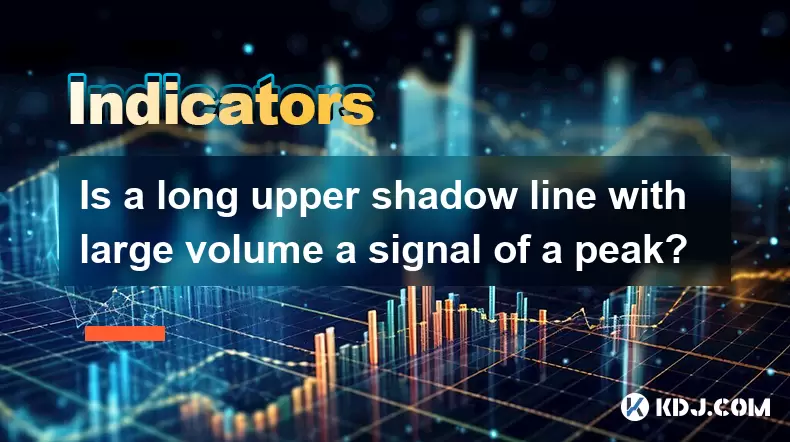
Is a long upper shadow line with large volume a signal of a peak?
Jun 17,2025 at 05:07am
Understanding the Long Upper Shadow LineA long upper shadow line, often referred to as a shooting star or inverted hammer depending on its location in a chart, is a candlestick pattern that indicates potential reversal from an uptrend. This pattern forms when prices rise significantly during the trading period but then fall back to close near the openin...

How to confirm the effectiveness of the average price line support in the time-sharing chart?
Jun 17,2025 at 12:56am
Understanding the Time-Sharing Chart and Its RelevanceIn cryptocurrency trading, time-sharing charts play a crucial role in analyzing short-term price movements. These charts typically display price fluctuations over a specific period, often ranging from minutes to hours. Traders rely on them to make quick decisions based on real-time data. The average ...
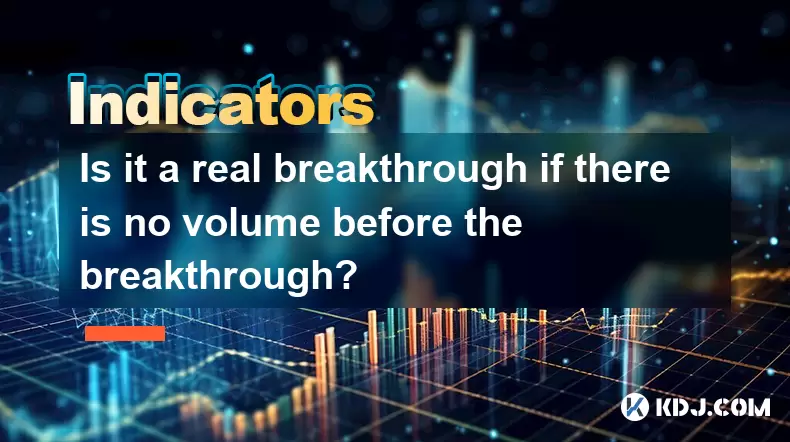
Is it a real breakthrough if there is no volume before the breakthrough?
Jun 17,2025 at 08:03am
Understanding the Concept of a Breakthrough in Cryptocurrency TradingIn cryptocurrency trading, a breakthrough typically refers to a price movement that surpasses a key resistance or support level. Traders often look for such events as potential signals for trend continuation or reversal. However, a crucial factor that determines the strength and reliab...

What does it mean when the momentum indicator breaks above the zero axis?
Jun 17,2025 at 12:43am
Understanding the Momentum IndicatorThe momentum indicator is a technical analysis tool used to measure the speed or velocity of price movements in cryptocurrency markets. It helps traders identify potential trend reversals, overbought or oversold conditions, and confirms existing trends. The indicator typically oscillates around a zero line, with value...
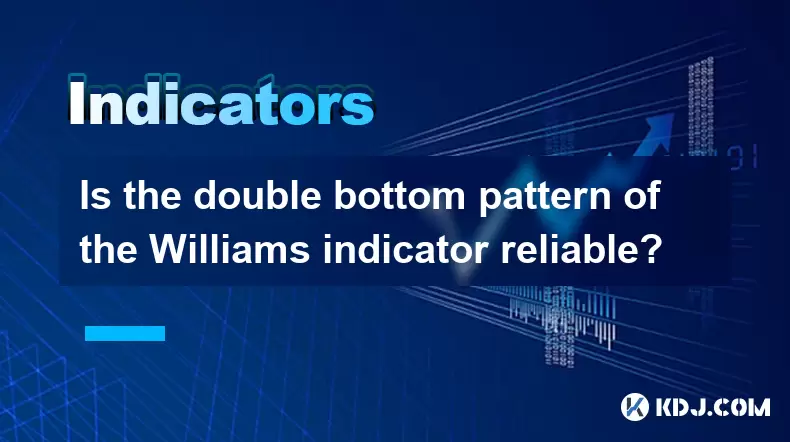
Is the double bottom pattern of the Williams indicator reliable?
Jun 17,2025 at 03:56am
Understanding the Williams Indicator and Its SignificanceThe Williams %R indicator, often referred to as Williams Percent Range, is a momentum oscillator used in technical analysis to identify overbought or oversold conditions in the market. Developed by Larry Williams, this indicator fluctuates between 0 and -100, with readings above -20 indicating ove...
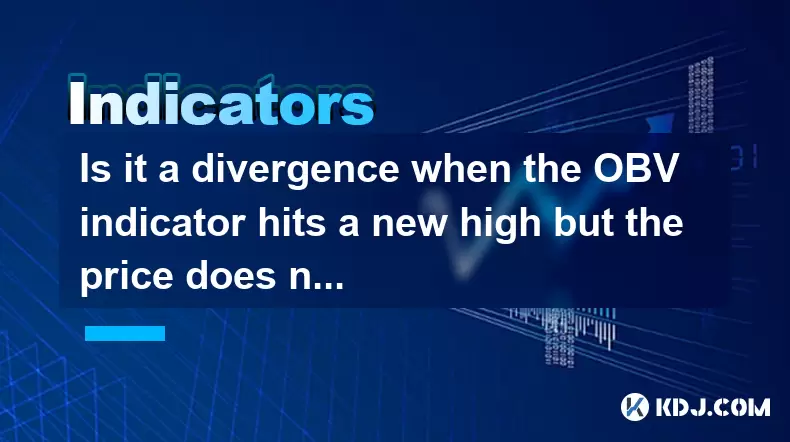
Is it a divergence when the OBV indicator hits a new high but the price does not rise?
Jun 17,2025 at 11:15am
Understanding the On-Balance Volume (OBV) IndicatorThe On-Balance Volume (OBV) is a momentum indicator used in technical analysis to predict changes in stock or cryptocurrency prices. It measures buying and selling pressure by adding volume on up days and subtracting volume on down days. The idea behind OBV is that volume often precedes price movement, ...

Is a long upper shadow line with large volume a signal of a peak?
Jun 17,2025 at 05:07am
Understanding the Long Upper Shadow LineA long upper shadow line, often referred to as a shooting star or inverted hammer depending on its location in a chart, is a candlestick pattern that indicates potential reversal from an uptrend. This pattern forms when prices rise significantly during the trading period but then fall back to close near the openin...

How to confirm the effectiveness of the average price line support in the time-sharing chart?
Jun 17,2025 at 12:56am
Understanding the Time-Sharing Chart and Its RelevanceIn cryptocurrency trading, time-sharing charts play a crucial role in analyzing short-term price movements. These charts typically display price fluctuations over a specific period, often ranging from minutes to hours. Traders rely on them to make quick decisions based on real-time data. The average ...

Is it a real breakthrough if there is no volume before the breakthrough?
Jun 17,2025 at 08:03am
Understanding the Concept of a Breakthrough in Cryptocurrency TradingIn cryptocurrency trading, a breakthrough typically refers to a price movement that surpasses a key resistance or support level. Traders often look for such events as potential signals for trend continuation or reversal. However, a crucial factor that determines the strength and reliab...

What does it mean when the momentum indicator breaks above the zero axis?
Jun 17,2025 at 12:43am
Understanding the Momentum IndicatorThe momentum indicator is a technical analysis tool used to measure the speed or velocity of price movements in cryptocurrency markets. It helps traders identify potential trend reversals, overbought or oversold conditions, and confirms existing trends. The indicator typically oscillates around a zero line, with value...

Is the double bottom pattern of the Williams indicator reliable?
Jun 17,2025 at 03:56am
Understanding the Williams Indicator and Its SignificanceThe Williams %R indicator, often referred to as Williams Percent Range, is a momentum oscillator used in technical analysis to identify overbought or oversold conditions in the market. Developed by Larry Williams, this indicator fluctuates between 0 and -100, with readings above -20 indicating ove...

Is it a divergence when the OBV indicator hits a new high but the price does not rise?
Jun 17,2025 at 11:15am
Understanding the On-Balance Volume (OBV) IndicatorThe On-Balance Volume (OBV) is a momentum indicator used in technical analysis to predict changes in stock or cryptocurrency prices. It measures buying and selling pressure by adding volume on up days and subtracting volume on down days. The idea behind OBV is that volume often precedes price movement, ...
See all articles

























































































